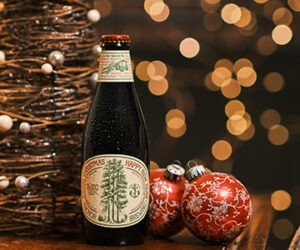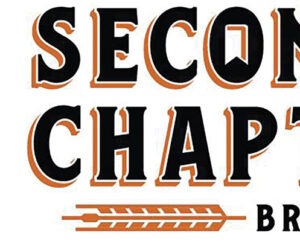Legend Brewing Company: Replicator
Dear Replicator,
Could you please provide a recipe for Legend Brewing Company’s Utebier? I came across this beer on a whim and scored many great points with my wife. I was looking to bring a growler home for some beer variety among my homebrews (I was between taps) and the bartender at Legend’s Outpost in Portsmouth, Virginia described it as based on a “Norwegian-style.” As someone married to a Norwegian citizen and who has spent some time in Norway, I was skeptical – “Norwegian-style beer” is not a great marketing ploy, even my wife would agree. I took the risk and was quite surprised, the beer was crisp and wonderful, a nice respite from today’s hop bombs, and had great malt and hop balance, perfect for spring and summer, but suitable all year. Having a Norwegian-style homebrew recipe would certainly earn me many bonus points on the home front and help maintain a small connection to Norway for my wife. I would be eternally grateful and further able to advance my case for a two- tap kegerator.
Greg Sanial
Chesapeake, Virginia
Greg, with you being a Virginian, I can only surmise that you know just how wonderful Legend Brewing Company’s portofolio really is including their Utebier. To everyone else, you’re in for a treat. When I first contacted Legend Brewing, I was confident that I’d hear back from them based on their reputation. Sure enough, within 48 hours, I received a response from John Wampler, Legend’s Brewmaster, who was thrilled to work with yours truly and provided me nearly everything I needed to recreate the beer.
Tom Martin, Legend Brewing Co.’s President and Founder, established the brand back in 1994, when the craft beer industry as we know it was still in its infancy. To put that in perspective, there were only 601 breweries operating at that time, according to the Brewers Association, compared to the 5,000+ that we know and love today. Tom’s training started at University of California-Davis, which was then followed by brewing at Anheuser-Busch, both of which provided him with the brewing skills to launch his own venture. Legend Brewing started with four beers in its pipeline: Lager, Pilsner, Brown Ale, and Porter, all of which are still pouring today.
Despite the change in times and craft beer’s growth within the beer industry, Legend continues to focus on traditional, true-to-style beer while scores of other breweries having expanded beyond their original remits. Legend’s original Brown Ale is still its signature beer unlike many other breweries who now showcase an India pale ale. I’d say that’s a pretty good strategy considering the success they’ve had netting 11 medals for their brews over the last decade.
Speaking of success, I’m always curious what separates a middle-of-the-road brewery with the greats. John noted that “Legend has been successful due to a stalwart and steady approach when sticking to basic brewing fundamentals, while continuing to make a wide variety of styles.” I think that’s something all homebrewers could learn from.
Currently, Legend Brewing Company operates two locations: Richmond, Virginia and Old Town Portsmouth, Virginia. The Richmond site is home to the 30-barrel (BBL) production brewery which turns out a significant 12,000 BBL per year. In addition, it has a full-scale restaurant boasting some of Richmond’s best burgers, 12 rotating taps, and a capacity of up to 400 guests. One of your biggest decisions will be where to sit. You can enjoy your fine brew in either the restaurant, the beer garden, or out on the 200-seat deck with a skyline view of the city. If you’re looking for something a bit cozier, the satellite location in Portsmouth may be up your alley. Located on the Elizabeth River, this brewpub opened in July 2017 and will begin brewing on the 3-BBL system in the near future.
Even though Legend’s roots are firmly entrenched in classical styles, that doesn’t mean the brewers don’t love to have fun and experiment. Enter their Urban Legend Series: As the name indicates, each one is based on an urban legend with a playful twist. Fairy Cross Saison mingles local fairy lore with raspberries while a time traveling USS warship invades their Norfolk Experiment Imperial Stout — these are just two examples. Legend Brewing Co. also has cask-conditioned ales and a barrel program. So no matter what your palate is requesting, Legend will have you covered.
Although Utebier isn’t part of their Urban Legend series, it’s definitely one of their unique brews. When I asked John, he mentioned “the term Utepils translates from Norwegian loosely into ‘the beer you enjoy outside on the first warm day of springtime’. We obviously brewed an ale, not a Pilsner, but wanted the beer to mimic the refreshing quality while still being full-flavored.” With a full-flavored malt backbone complemented by the residual sweetness from honey malt and a heavy hand of late-addition hops, this beer is sure to be flavorful. In order for both the malt and the hops to shine, Legend chose to use a clean fermenting ale strain. However, when used at the upper end of its temperature range you’ll get just the hint of fruity esters to elevate the beer further. It’s the perfect type of beer to be savored in springtime or even in the fall when temperatures begin to dip and a crispness appears in the air . . . tons of flavor and quaffable to boot!
Have fun brewing your own version of Utebier. Prost!
Legend Brewing Co.’s Utebier clone
(5 gallons/19 L, all-grain)
OG = 1.056 FG = 1.014
IBU = 24 SRM = 8 ABV = 5.5%
Ingredients
7.5 lbs (3.40 kg) 2-row pale malt
2.5 lbs (1.13 kg) 2-row pale ale malt
1.5 lbs. (0.68 kg) honey malt
0.25 lb. (0.11 kg) flaked wheat
2 AAU Cascade hops (30 min.) (0.25 oz./7 g at 8% alpha acids)
10 AAU Cascade hops (15 min.) (1.25 oz./35 g at 8% alpha acids)
25 AAU Amarillo® hops (0 min.) (2.5 oz./70 g at 10% alpha acids)
6 AAU Cascade hops (0 min.) (0.75 oz./21 g at 8% alpha acids)
8 AAU Apollo hops (0 min.) (0.5 oz./14 g at 16% alpha acids)
Wyeast 1056 (American Ale) orWhite Labs WLP001 (California Ale) or Safale US-05 yeast
3⁄4 cup corn sugar (if priming)
Step by Step
Mill the grains, then mix with 3.7 gallons (13.9 L) of 166 °F (74 °C) strike water to reach a mash temperature of 154 °F (68 °C). Hold this temperature for 60 minutes.
Vorlauf until your runnings are clear, then begin to sparge. Sparge the grains with 4.5 gallons (17 L) and top up as necessary to obtain 6.5 gallons (24.6 L) of wort. Boil for 60 minutes, adding hops at the times indicated in the ingredients list found above. Add a kettle fining such as Irish moss or Whirlfloc if you so desire.
After the boil and whirlpool, rapidly chill the wort to slightly below fermentation temperature, which is 70 °F (21 °C) for this beer. Pitch yeast. Maintain fermentation temperature of 70 °F (21 °C), for ten days or until the completion of primary fermentation, whichever is later. Then, reduce temperature to 32 °F (0 °C), and bottle or keg the beer and carbonate to approximately 2.5 volumes.
Legend Brewing Co.’s Utebier clone
(5 gallons/19 L, extract with grains)
OG = 1.057 FG = 1.014
IBU = 24 SRM = 8 ABV = 5.7 %
Ingredients
5.75 lbs (2.61 kg) pale dried malt extract
1 lb. (0.45 kg) honey malt
0.25 lb. (0.11 kg) flaked wheat
2 AAU Cascade hops (30 min.) (0.25 oz./7 g at 8% alpha acids)
10 AAU Cascade hops (15 min.) (1.25 oz./35 g at 8% alpha acids)
25 AAU Amarillo® hops (0 min.)(2.5 oz./70 g at 10% alpha acids)
6 AAU Cascade hops (0 min.) (0.75 oz./21 g at 8% alpha acids)
8 AAU Apollo hops (0 min.)(0.5 oz./14 g at 16% alpha acids)
Wyeast 1056 (American Ale) orWhite Labs WLP001 (California Ale) or Safale US-05 yeast
3⁄4 cup corn sugar (if priming)
Step by Step
Bring 5 gallons (19 L) of water to approximately 166 °F (74 °C) and hold there, steeping the specialty malts in grain bags for 15 minutes. Remove the grain bags, and let drain fully. Add dried malt extract while stirring, and stir until completely dissolved. Turn heat back on and bring wort to a boil. Total boil time is 60 minutes, adding hops at the indicated times. Add a kettle fining such as Irish moss or Whirlfloc if you so desire.
After the boil and whirlpool, rapidly chill the wort to slightly below fermentation temperature, which is 70 °F (21 °C) for this beer. Pitch yeast. Maintain fermentation temperature of 70 °F (21 °C), for ten days or until the completion of primary fermentation, whichever is later. Then, reduce temperature to 32 °F (0 °C), and bottle or keg the beer and carbonate to approximately 2.5 volumes.
Tips for Success:
Fresh hops, a solid yeast pitch preferably from a starter, and sulfate-forward brewing water are keys to nailing this beer. Using fresh hops will net you bright, fresh hop flavors especially with the substantial late hop addition. The honey malt will add quite a bit of sweetness and without healthy yeast you might end up with an under-attenuated beer. Aim for a 2-L starter (OG at about 1.035) to provide enough healthy cells for a strong fermentation. Finally, with such a low calculated IBU beer for the style, a sulfate:chloride ratio of 1.5:1 would enhance the hop bitterness in the beer.


